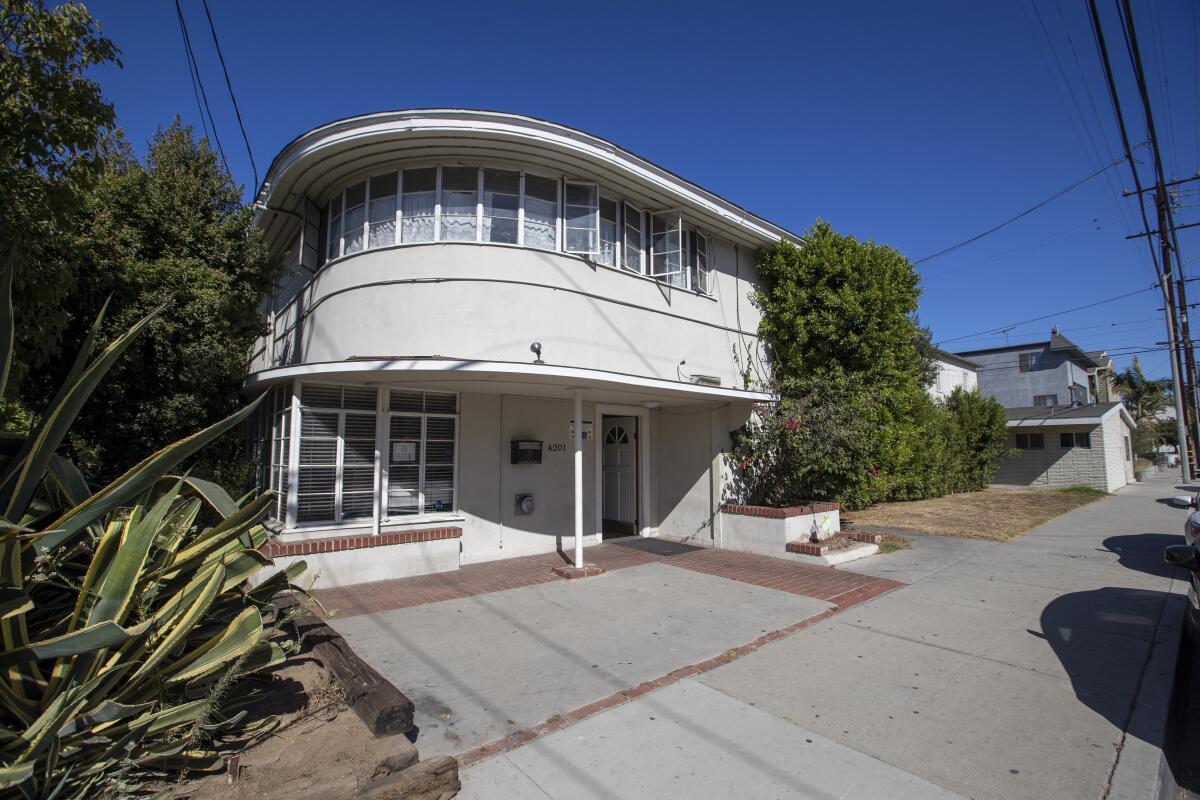To stop adults with mental illness from losing their housing, L.A. County may intervene

The L.A. County Board of Supervisors was alarmed last year by a report detailing the rapid loss of board-and-care homes, often the final stop before a tent on the streets for adults with little income and debilitating mental illness.
The supervisors asked the county’s health agencies to provide a plan to stabilize the facilities financially and open more of them. In response, the agencies hired an outside consulting firm, which conducted a six-month study. The board will consider a motion to implement the plan at its meeting next week.
“This needs to be escalated to the state level and key legislators need to be involved to consider some fast solutions before we completely lose the system of care and housing,” said Lisa Kodmur, who worked on the study by the consulting firm Sadlon & Associates.
The details of the motion are still being worked out by county staff. But their recommendations are likely to include a mandate to improve data collection, to use unspent mental health funds from the state for maintenance of board-and-care homes and to advocate for increased state funding levels for them.
At its crux, the decline of board-and-care homes is out of the hands of L.A. County — and the many other counties in California experiencing similar declines. It’s a result of a cap on state and federal reimbursement rates, which stands at about $35 a day per resident. The licensed homes are required to provide 24-hour staffing, three meals a day and medication management. The rate leaves the owners of many homes operating at close to break-even and unable to keep up on the maintenance of their aging buildings.
Residents of these facilities, given their often meager income and debilitating mental illness, are at high risk for homelessness, giving the board-and-care home crisis an added layer of urgency.
Local leaders need to step up, Kodmur said.
“Someone would have to take the lead,” she said. “If the goal is to help people with mental illness live lives of dignity and meaning, we need to create partnerships to improve the qualify of care in these facilities. It could be a partnership among multiple entities. Nonprofits could play a role. The county could play a role. The state Community Care Licensing Division could play a role.”
At the request of the consultants, the state’s Licensing Division, which does not separately track homes that serve people with mental illness, conducted a survey concluding that 39 homes had gone out of business over a three-year period, leaving only 154 homes with about 5,100 beds in Los Angeles County.
“I am grateful that the county made this a priority and finally devoted the resources to create a baseline inventory of how many facilities and beds we have,” said Kerry Morrison, a mental health advocate and co-author of A Call to Action, the 2018 report that prompted the supervisors to study board-and-care homes. “When we started researching this in 2017, we found very little data.”
In its follow-up study, Sadlon & Associates compiled interviews with 48 board-and-care operators and 47 government agencies, service providers, healthcare associations, and residents and family members. The consultants reported that 29% of the operators said they were considering closing.
“Facility closures are often tied to noncompliance due to not having the resources” for repairs, the study found. The financial stress also lowers the quality of care, it said.
The consultants said the county, which is currently providing subsidies for about 2,000 board-and-care home residents, could help by contributing more money, better organizing homeless and mental illness services, and doing more to mobilize philanthropists.
Specifically, they recommended, the county should double the number of residents it subsidizes to 4,000, with a tiered rate paying more for those with higher needs and expand other sources of funds for facilities serving low-income residents. The county should also set up a capital fund, matched by philanthropic contributions, to help operators make deferred improvements to their facilities, the consultants said.
More broadly, the study found, the county should do more to improve the qualify of life of those living in board-and-care homes by delivering professional support services and promoting support groups, job training and volunteerism.
To improve operator effectiveness, the county should sponsor a member association, set up a bed tracking system and develop quality care standards.
Morrison praised the recommendations and urged the board to act on them.
“I think the stakeholder engagement process yielded some rich suggestions, and I hope the county and the state can work together quickly to infuse funds into the system to ward off any additional closures of our board-and-care facilities,” Morrison said.
More to Read
Sign up for Essential California
The most important California stories and recommendations in your inbox every morning.
You may occasionally receive promotional content from the Los Angeles Times.











